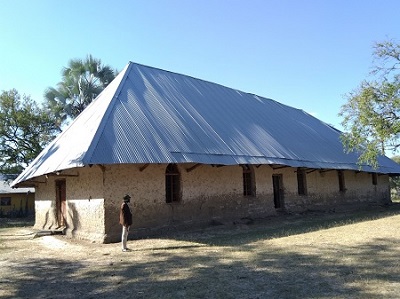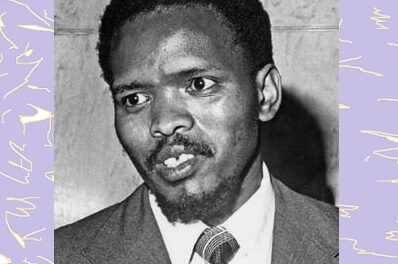
The brief history of the Finnish Missionary Society and why it is historically significant in Owambo society?
By Kleopas Nghikefelwa /
According to my secondary source of historical information (Wikipedia, the free encyclopaedia), the Finnish Missionary Society is a Lutheran missionary society formed on January 19, 1859, in Helsinki, Finland.
One can see that the Finns were very much hungry and thirsty to start mission works in Africa, because the idea of forming this society was just initiated immediately after (28 October 1858) the approval of the Russian empire (that ruled Finland that time).
Then some 8 years later, on 18 September 1867, a major historic decision was made by the Finnish Missionary Society, during its annually general meeting, to send missionaries to Owambo, which is now the far-northern part of Namibia.
According to author Dr. SVV Nambala (History of the Church in Namibia: 1994, page 80), “The Finnish Missionary Society decided to send its missionaries to Owamboland when Carl Hugo Hahn sent a letter to Finns in 1866, appealing to them to start mission work in Owambo”.
After a long journey of many days and weeks from Europe to Africa, which was known as the dark continent, the first 10 Finnish missionaries successful landed safely in Namibia in February 1869, at the port of Walvis Bay, and later arrived safely in Owambo mission field, at Omandongo, on 9 July 1870.
In the hot climate of Owamboland, the Finnish Missionary Society had been ploughing and planting seeds of mission work for so many years without giving up. Therefore, on this day, 19 January, the birth-day of the Finnish Missionary Society, I decided to make a short reflection on the memory of the Finnish Missionary Society in Owambo society.
In my short research I discovered that under the wings and umbrella of the Finnish Missionary Society, the Finnish missionaries played a significant role in Owambo society, especially by establishing various mission stations in different places (like Okahao, Engela, Nakayale, Tsandi, Ongwediva, Eenhana, Okongo and many others places in Kavango East/West which at the time served as the centres for modern learning and modern medical practice, as well as for transmission of the Christian faith).
Above all, these mission centres became centres of rural transformations and most useful places for local people searching for employment, safety, social welfare and health care and educational development.
For example, according to author Herman Tonjes (The Mission in Owambo: 1996, page 15-16), “During the last Famine Owamboland experienced a drought early in 1908…” “During the times such as these, the (hungry) people come to the mission stations. They stand at missionary’s doors and showing their empty hands to the missionaries saying ‘Ondjala! Ondjala! Hunger! Starving! Starving!’”.
According to author Martti Eirolla (Owambo Gefarhr, 1992), “Many people suffered hunger and they looked for support at Finnish Mission stations.”
Generally, more evident is the positive contribution of the Finnish Missionary Society to Namibia’s education development. It can also be observed (through oral history) from the living elders who attended mission schools, between 1950s and 1970s. Some positive contribution of the Finnish Missionary to Namibian education can also be learnt from the book called ‘Schools in Ovamboland from 1870-1970’ by Lahja Lehtonen.
Yes it is hard for humans, even missionaries, to live like angels in this world. Therefore, sometimes the Finnish Missionary Society is heavily criticized (by cultural activists) for its negative attitude towards the local African cultures and traditions (such as Olufuko festivals and others).
But in this article I would like to focus more on the memory of fruitful missionary work done by the Finnish Missionary Society in Owambo society.
Now allow me to share with you some few well-known, unforgettable, outstanding and important historical events occasioned by Finnish Missionary Society among Owambo people:
> The development of local languages grammar and literature. It was followed by the printing of the first Ondonga ABD book by Pietary Kurvinen in 1876 and the establishment of the first printing press at Oniipa in 1901.
> The arrival of the first medical doctor Dr. Selma Rainio in Owambo in 1908 and the establishment of the first hospital in 1911. It was followed by the establishment of the first nursing school in Onandjokwe that opened its door in 1930.
> The establishment of the first teacher training seminary at Oniipa in 1913. It trained the first local pastors who were ordained in 1925. It was followed by the process of establishing the ELOC/ELCIN church and the first Bible translation in a local language (Oshindonga) published in 1954.
> The opening of the first secondary school in Owambo at Oshigambo in 1960s.
Lastly, in the past 30 years of Namibian independence, we also hear often many very important Namibian national political leaders praising well the Finnish Missionary Society for the good support it provided to the Namibian people during the liberation struggle (1966-1990).
Which means the Namibian national leaders also recognised the Finnish missionaries as active participants in Namibia’s liberation struggle.
In conclusion, when we are documenting Namibian history in our museums and archives, we shall never forget also to collect and preserve the memory of the role played by the Finnish Missionary Society and others in Namibian society.
 Nakayale Mission Station in Outapi, Ombalantu. [In the main photo, is Engela Mission Church, Oukwanyama.]
Nakayale Mission Station in Outapi, Ombalantu. [In the main photo, is Engela Mission Church, Oukwanyama.]
– Mr. Kleopas Nghikefelwa is a museum and heritage activist/curator. He can be reached at: Kleopasn@gmail.com






